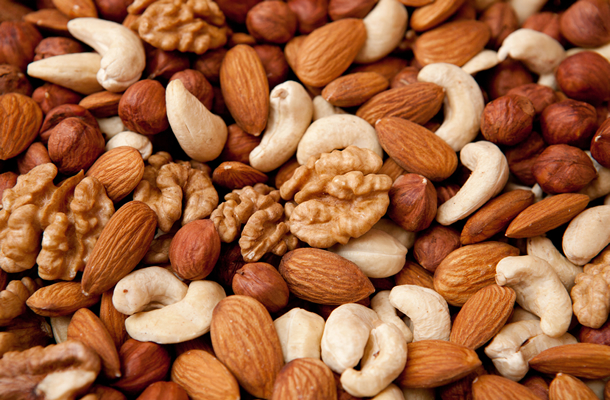What is the Best Exercise to Help Lose Weight?
Which Exercise is Best?
Firstly, well done! The fact that you are reading this means that you are far more likely to succeed in your weight loss journey. All too often people attempt to lose weight without really thinking about how it is going to happen. More often than not the result is that it does not happen!
As I have mentioned in previous articles, to lose weight (i.e. to lose fat – there is an important distinction between the two*) you need to change your diet and also exercise more. Just to recap, the reason why you are overweight is no different from the reason why any other person becomes overweight – you have been eating more food than your body needs. It makes no difference whether you have a rare genetic condition, are on medication or have a slow metabolism – it is still possible to eat a healthy and well-balanced diet without gaining weight.
If you are looking for a peronalized fitness plan to help lose weight, then you should try our personalized weight loss plan – we will set out your diet and exercise routine to help you get best results. But do read the rest of this article first to understand why the type of exercise is not of vital importance.
There are No Fast Solutions
Back to losing weight though. Firstly, do not hope for a quick weight loss solution – there are none. Really, none, zero, zilch, nada. Nothing that you can do will make you lose a significant amount of weight in a very short time. If there was such a solution by January 14th of every year there would be no overweight people as everyone would have reached their New Year Resolutions to lose weight already. I hope that this has not disheartened you, I just like to be realistic about these things. Why?
The Importance of Being Realistic
Most people fail to lose weight simply because their expectations are too high. If you set realistic goals within realistic time-frames then you will not be disappointed when you fail to lose 50 pounds in a month. So what is a realistic goal? Really maintaining a weekly weight loss of anywhere from 1 to 3 pounds is realistic, but, that is not to say that you will lose that much weight every week. On the flip side, you may lose more.
The Best Way to Exercise To Lose Fat
There are many different ways to exercise. Many people sell the idea of a particular exercise program and just about every fitness enthusiast is sure that their chosen method of exercising is the best. So, how on earth do you decide what type of exercise to do? Who is telling the truth? Do you do long cardio sessions of running, swimming, cycling or rowing? Do you do interval training with alternating short sprints and slower recovery? Do you lift light weights many times or heavy weights few times? Whichever method you chose someone will tell you it is the best. Well, they are all wrong, because ….
There is No Best Way to Exercise!
This may sound like nonsense, but really it is true. Here’s why: To lose weight (reduce fat tissue) you need to make sure that each day your body is burning more calories (using more energy) than you are consuming. So if your body requires 2000 Calories to maintain its current mass (fat and muscle) and you only consume 1750 Calories and burn an addition 250 Calories with exercise, you are running a calorie deficit of 500 Calories. Do this every day and you will lose about 1 pound of fat each week, all things being equal.
A word of caution: We are all different and this is just a guideline. It is impossible to provide an exact answer to the all too often asked question “how long will it take me to lose 10 pounds?“. There are too many variables at play. So, any form of exercise will help you to lose weight. The real question is, what is the best type of exercise for you? Here is an example. On our article about jogging and running one of our readers asked whether slow jogging was as effective as faster running. This was the answer I gave:
“If you run at 10 mph (approx. 16 km/h) for 15 minutes you will burn 413 calories. You burn the same if you walk at 3 mph (approx. 5 km/h) for 60 minutes. So running burns fat 4 times faster than walking – but you may not actually be able to maintain that pace for 15 minutes if you are not fit. A compromise will probably be better, such as jogging for 30 minutes – If you jog at 5.5 mph (approx. 9 km/h) for 30 minutes you will burn 478 calories.“
So. although running is a better way to exercise to burn calories faster, it only works if you are fit enough to sustain running for long enough. Most people are able to walk for an hour, few are able to run fast for 15 minutes. So which is “the best exercise” in this case? Walking of course, as the goal is to create a calorie deficit.
The same rule can be applied to resistance exercise. However, one problem with using just resistance training to manage your weight is that the key goal in weight training is to gain muscle and to build muscle you need to eat more. Your muscles need glycogen to work (the liver converts dietary sugar into glycogen) and your muscles need amino-acids from proteins to grow stronger. If your goal is to lose fat, a plan that involves eating more is not always the best idea, especially if you are overweight because you love eating! However, weight training does still burn additional calories so if you make sure that you workout without taking in addition calories (you may wish to increase protein and reduce low quality carbs) then you can create a calorie deficit.
The Science Behind these Claims
OK, you really should not just believe everything you read without questioning it first! How can you be sure that my suggestion that the type of exercise does not matter is correct? What about all those bodyweight plans, weight training plan, workout routines etc. that everyone is selling? The before and after photos always show great results – they must be the best? Well, many do work, but only because the individuals work hard to get results.
“Significant weight loss and improved cardiorespiratory fitness were achieved through the combination of exercise and diet during 12 months, although no differences were found based on different exercise durations and intensities in this group of sedentary, overweight women.” – Jakicic et al, 2003.
In 2001 a group of medical and sports scientists carried out a 1 year study into women and weight loss. 184 overweight (average BMI of 32.6) and previously sedentary women (never did any exercise) completed the study. The women were split into two broad groups and one group performed vigorous intensity/high duration exercise and the other group performed moderate intensity/high duration exercise.
So this is comparing short and intensive workouts with those “long boring cardio” sessions that so many people are convinced do not aid weight loss. The result of the trail showed that the women doing the short and intensive exercise lost on average 8.9 Kg and the women doing the longer workouts lost on average 8.2 Kg. As far as the researchers were concerned there was no significant difference between the two.
The Diet While Exercising
As a part of the study all women followed a strict diet of 1200 or 1500 Calories per day and ensured that dietary fat was 20% to 30% of total energy intake each day. The women in the study had an average age of 37 which means that daily calorie needs at low activity are 2000 Calories.
Why this Research Is Important
What makes this research really important is the fact that the 184 women who stuck to the plan for 12 months all lost weight, and an average of 8.55Kg (19 pounds). This means that if you are an overweight woman and you start exercising today you can expect to lose 19 pounds over the next year. This is again proof that a healthy diet (healthy being defined as balanced and portion controlled) combined with regular exercise will lead to weight loss in obese individuals. It is really not possible to fail to lose weight if you exercise and eat healthily. All you need to do is stick to the plan.
What about Prof. Tabata?
I have talked about Tabata training and short intensive cardio workouts before. In Scientists Prove Short Intensive Cardio Better Than Endurance To Lose Weight and Get Fit I discussed research that showed how intensive exercise helped people to get fit and lose weight quicker and in MetCon – The Way To Get Fitter Faster I talked about the Tabata method.
However, it is my belief that these studies do provide evidence that short and intensive exercise can improve peak performance in athletes and can help people to lose fat quicker, but, for those that are not in excellent physical shape these systems do not apply. As I mentioned in the example above, the average unfit person can walk for 60 minutes without stopping but cannot run fast for 15 minutes. Also, people start too fast and intensive with exercise tend to burn out too quick, the failure rate is higher. Often people take this approach because they are desperate for faster results and when they do not get the results they want the combination of burnout and disillusionment makes them just give up.
Average Calorie Expenditure For Different Activities
One question people often ask when choosing a new activity to help lose some weight is, “how many calories will it burn?” There is often a misconception regarding how much energy is used in different activities.
For example, many people disregard walking as a form of exercise as it does not burn many calories, but when you consider that you could walk for a couple of hours on a Sunday afternoon, which would expend up to 600 Calories, which is the equivalent of 1 hour on the cross trainer, or an hour of step aerobics , the benefits of a simple exercise like walking become suddenly apparent.
Most people, even those who have not exercised for a long time, can walk for a couple of hours if they want. However, most unfit people will struggle to jog for more than 15 minutes to start with. Walking wins!
Skipping and running obviously use the most energy in this group, but very few people are able to sustain either exercise for a couple of hours. If you are very fit you can run for one hour but skipping is generally done at a few minutes at a time as it is such an intensive form of exercise.
The table below lists more activities and the average Calories used per hour for each. Obviously this is just a guideline as different people will require more energy for different activities, depending on the size of the person, muscle mass etc. But it is a useful comparative tool.
On the list we have including a few “non activities” such as eating, sleeping and sitting just to highlight that our bodies are burning calories all the time, this being the basal metabolic rate. For example, sitting is 85 Calories per hour which works out 2040 Calories per day.
Metabolism also varies depending on muscle mass, so the more muscle you have the more calories you burn off all the time. This table can help you to calculate calories burned during exercise.
Type of exercise
Kilocalories used per hour
Aerobics – e.g. gentle aerobics classes450Aqua aerobics – gentle swimming pool workouts400Cycling – either stationary bike of road450Cross Trainer / Elliptical Trainer500Eating – yes, eating burns calories!85Golf with a trolley180Hiking / Brisk Walking500Jogging at 5 mph500Rowing Machine Workout550Running – at around 7mph700Sitting / Sedentary85Skipping with rope700Sleeping55Spinning Class650Standing Still100Step aerobics – High Energy Aerobic exercise550Playing Squash650Swimming500Table tennis290Grass Court Tennis350Walking at 3 mph280The Solution: The Best Way To Exercise
I suggest exercising daily if possible. This can be following a regular walking plan or daily running. It is really best to mix things up though, do something different every day to work your heart and all your muscles. Most importantly, find activities that you enjoy so that exercise becomes a pleasure and a part of your life rather than a chore. In fact, if you are unsure of what to do, follow our weekly exercise plan. Feel free to modify to suit your needs and abilities and ask questions if in doubt. Take a look at this table of calories used in different exercises to help develop a personalized fitness plan. Enjoy!
Scientific Reference
The research that was discussed above was; “Effect of Exercise Duration and Intensity on Weight Loss in Overweight, Sedentary Women” by John M. Jakicic, PhD; Bess H. Marcus, PhD; Kara I. Gallagher, PhD; Melissa Napolitano, PhD; Wei Lang, PhD. Published in JAMA (The Journal of the American Medical Association) 2003; 290(10):1323-1330. doi: 10.1001/jama.290.10.1323. Abstract: http://jama.ama-assn.org/content/290/10/1323
The researchers were based at various institutions: University of Pittsburgh, Physical Activity and Weight Management Research Center, Pittsburgh, Pa (Drs Jakicic and Gallagher); Brown Medical School and the Miriam Hospital, Centers for Behavioral and Preventive Medicine, Providence, RI (Drs Marcus and Napolitano); and Department of Public Health Sciences, Wake Forest University, Winston-Salem, NC (Dr Lang).
John M Jakicic is currently (September 2011) Chair of the Department of Health and Physical Activity. He specialises in the study of the effect of different exercise regimes on long term weight management as well as researching how exercise reduces risk of developing diabetes.
Notes
*at the beginning I mentioned that to lose weight is not the same as to lose fat. What I am referring to is the fact that if you reduce calories and exercise a lot your body will break down fat to provide more energy for vital functions but at the same time it will also break down muscle, “muscle wastage“. This is your biggest enemy – do not restrict calories too much, losing muscle tissue is disastrous if you are trying to get fit and lose fat.
Discuss below or Discuss on Google+
Top Workouts
- A Walking Plan
- Jogging and Running
- Home Workouts
- Circuit Training Workouts
- Weight Training
-
The Key To Successful Weight Loss Balancing Blood Sugar Levels
When you talk about losing weight youre really talking about losing fa
-
Is Fruit Making You Fat?
Following the U.S. Department of Agriculture’s revamped food py
-
17 Fat Burning Foods – Eat Lots And Lose Fast !
by Karen Brown The more fat burning foods that you consume, the more w
-
Health Canada Warns Against Meiti Xing
Health Canada is advising consumers not to use Hanguo shoushen yihao d
-
The History Of Tumescent Liposuction
Liposuction is also referred to as lipoplasty, suction-assisted lipect
-
The Skinny on Losing Weight with Green Coffee Beans
The latest buzz brewing in the nutrition world is the recent link betw
- DON'T MISS
- The Advantages and Rewards of the Key Nutrients and Oxides of Pure Acai Berry Pro
- Your sleeping position affects your brain and overall health
- Losing Weight Faster By Increasing Your Metabolic Rate
- What Is In T5 Thermobolics?
- A Realistic Weight Loss Plan: The Goal to Strive For.
- Learn to stop emotional eating
- Smart Weight Loss Motivation Tips
- How To Go Low On Calories
- Do You Know About Extra Body Fat
- Fraud or Fact? Debunking Weight Loss Myths




